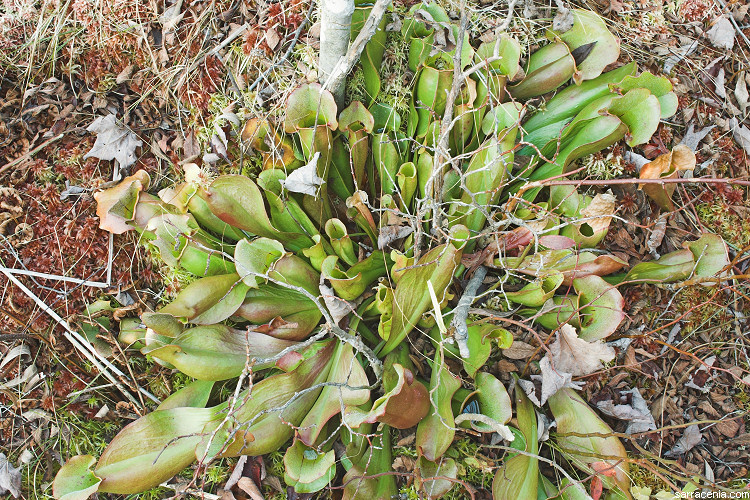
Dusk approaches:
The lowering sun dropped into clouds near the horizon, so I started back to the car. I had a few hours of driving
in front of me, and I had no interest in navigating unfamiliar country roads at night, low on gas.
As I left the bog, I noticed a plant next to the boardwalk that I had somehow overlooked.
Despite its position in full sun, the plant was only very lightly pigmented. It reminded me
very much of plants that Mazur & Lechtman (2005, Carniv. Pl. Newslett., 79-84) referred to as
"semi-veinless." They argue that such plants might result from hybridization of normal plants and the anthocyanin-free
form of this species (S. p. f. heterophylla).
Perhaps S. purpurea f. heterophylla once occurred at this
bog, and its former presence is echoed in modern days by these
"semi-veinless" plants.
If you happen to see yellow-flowered Sarracenia at this or other bogs, do not
remove them. Photograph the plants, contact me, and I will tell the appropriate TNC folks.
After this distraction, I hustled back to my car and drove north. In a few hours I was at my hotel room in Danby, Vermont.
While close to the trailhead for my next day's hike, Danby is a town that gets much of its income from tourism, especially
Killington Ski Resort. As such, my tiny room was far more expensive than I wanted.
I spent the evening disinfecting my gear and preparing some herbarium specimens that I
had collected during the day.
Disinfecting, you say? Yes! I think it is important that botanists, ecologists, and naturalists take care to remove seeds and soil particles
from their gear between sites. I did not want to transport seeds of Phragmites,
Microstegium, or other invasive species. I recommend spraying your boots with a 10% bleach solution.